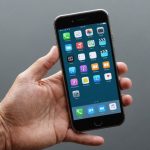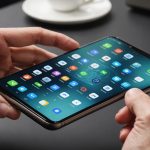Overview of Smartphone Accessibility Features
Smartphone accessibility is integral to making device features more inclusive and user-friendly. Major smartphones come equipped with an array of built-in accessibility features tailored for users with diverse needs. These include functionalities like screen readers, voice commands, and adjustable text sizes for vision impairments, as well as sound adjustment options for hearing impairments. Recognising the importance of such settings, users can greatly enhance their interaction with their devices by customising these options according to their individual requirements.
Accessing and altering these settings is straightforward, with most devices offering a dedicated “Accessibility” menu within the settings app. This section allows users to easily toggle specific options such as voice feedback, or adjust contrast and text size to create a more suitable viewing environment. Additionally, voice commands enable hands-free operation, essential for those with mobility restrictions.
Have you seen this : Top smartphone security features you can’t miss when buying a new device
Moreover, the integration of accessibility features can dramatically improve the user experience by ensuring that all users, regardless of their abilities, can navigate their devices with ease. As technology advances, ongoing improvements in these features continue facilitating a more accessible and inclusive experience for everyone.
Accessibility Features for Vision Impairments
Smartphones offer a range of vision accessibility features to assist visually impaired users. Screen readers are essential tools that convert on-screen text into speech. This allows users to navigate their devices without needing to visually process information. These tools are integrated into most devices, making it easier for users to enable them through accessibility settings.
In parallel : Exploring the effects of smartphone materials on longevity and resilience
Adjusting text size and contrast settings also plays a significant role in enhancing readability. Users can customize these settings to enlarge text or alter colour schemes for better visibility, catering to individual preferences and vision impairments. This functionality can be crucial for those with partial sight.
Additionally, magnification gestures provide dynamic options for users needing temporary zoom. By enabling these gestures, users can quickly zoom in on sections of their screen, offering convenience without permanent changes to the entire display. This can be done through a pinch or a tap, depending on the device’s gesture capabilities.
Collectively, these features empower individuals with vision impairments to access information and use their devices more independently. Understanding and utilizing these features can dramatically improve the overall user experience by offering tailored solutions that accommodate specific vision needs.
Utilizing Voice Assistants and Voice Commands
Incorporating voice technologies into your daily routine can significantly enhance hands-free navigation on smartphones. Voice assistants, such as Google Assistant and Siri, offer robust capabilities for accessibility. These smart assistants allow users to perform diverse tasks using simple voice commands, enhancing the overall user experience.
Activating and customising voice command functions is straightforward. To get started, users typically need to access the settings menu and navigate to the voice assistant section. Following setup, voice recognition can be tailored to better understand individual speech patterns. This increases accuracy and responsiveness.
Voice assistants can perform various tasks, ranging from making calls and sending messages to setting reminders and controlling smart home devices. For individuals with mobility impairments, this means accessing essential features without the need for physical touch.
For instance, by instructing a voice assistant to “call Mum,” the device can initiate this through the hands-free system. Or, simply saying “remind me to take my medication at 8 PM” adds a reminder seamlessly. Embracing these features can transform how users engage with their devices—enhancing efficiency and empowering those who benefit from smart assistants in navigating their digital world.
Personalizing Touch and Gesture Settings
Customising touch accessibility options can profoundly enhance user interaction with smartphones. Tailoring gesture customization is essential for those with diverse motor skills, enabling seamless navigation and improving user control.
To begin customization, users can adjust the touch sensitivity under settings, making smartphones more adaptable to individual needs. Features often include options to modify the swipe speed or tap duration, providing flexibility for users with limited dexterity. Gesture customization allows for command assignment like swiping up to answer calls or tapping twice to open favourite apps. This ensures quicker, more efficient use of frequently accessed features.
Moreover, altering touch settings can empower users by giving them control over their devices’ interfaces. For instance, activating “Assistive Touch” or “Gesture Navigation” on many devices ensures a more intuitive experience, reducing the effort needed for complex commands.
In practice, personalised touch settings can transform device usability. A user with arthritis might prefer a prolonged touch duration to avoid accidental selections, while another with Parkinson’s could benefit from a reduced swipe threshold. Each case highlights how gesture customization addresses specific physical challenges, making smartphones more user-centric and accessible.
Customizing the Home Screen for Better Navigation
Creating a personalized interface is essential for optimizing smartphone usage. A well-organized home screen can significantly enhance the user experience by ensuring smoother navigation. Here’s how you can customize your home screen effectively:
-
Rearranging apps and widgets: Place frequently used applications within easy reach. Position widgets, like calendars and weather updates, on the main screen for quick access to essential information. This setup reduces the effort required in searching for daily-use features.
-
Using folders: To maintain an uncluttered interface, group similar applications into folders. This not only streamlines navigation but also aids in quick identification. For instance, categorizing social media, productivity, and entertainment apps separately can save time and improve app accessibility.
-
Incorporating high-contrast themes: For better visibility, apply high-contrast themes that make icons more distinct. Additionally, utilizing larger icons can help users with vision impairments distinguish apps more readily. These modifications can make your device feel more tailored to your needs.
By implementing these home screen customization techniques, users can enjoy a more organized and intuitive smartphone experience, aiding in seamless day-to-day navigation.
Third-Party Apps Enhancing Accessibility
Exploring accessibility apps offers innovative solutions to further enhance the smartphone experience. These third-party apps cater to a variety of specific needs, supplementing the built-in accessibility features of major smartphones. Understanding their key components helps users select the most suitable applications.
Numerous apps are available for diverse needs, such as reading assistance or enhanced hearing support. Magnifier apps are perfect examples of third-party solutions, providing users with a digital magnifying glass to better view small text or objects. Similarly, voice transcription apps enable individuals with hearing impairments to jot down speech in real time, facilitating better communication.
When choosing an accessibility app, it’s essential to consider user reviews and app ratings. Evaluating these can provide insights into the app’s efficacy and reliability. Additionally, opting for apps offering customisability ensures that users can tailor functionalities to meet personal preferences and requirements, thereby improving usability.
Moreover, apps like Be My Eyes, which connect visually impaired users with volunteers for real-time assistance, illustrate the way technology and community support combine to offer a comprehensive accessibility solution. By leveraging these innovative solutions, users can significantly enhance interaction with their devices and navigate daily challenges more effectively.
Accessibility Tools for Hearing Impairments
Exploring hearing accessibility options effectively enhances communication for users with hearing impairments. Smartphones offer a variety of sound customization settings, such as adjustable sound profiles, to amplify crucial sounds like alarms or calls. These settings provide flexibility in tailoring audio levels according to individual needs, ensuring a comprehensive audio experience.
In addition to sound adjustments, smartphones integrate visual alerts, replacing audio notifications with vibrating alerts or LED flashes. These can be crucial for environments where sound is not an option or for users with severe hearing impairments. Setting up these visual notifications typically involves navigating to the accessibility section of settings and enabling respective features.
Utilising apps specifically designed for communication, like video relay services or captioning apps, can greatly enhance communication. For instance, using apps like Ava can transcribe spoken words into text, making conversations more accessible. Additionally, integrating hearing aids with smartphones via Bluetooth enables seamless audio streaming directly to the device.
When considering accessibility improvements, feedback from hearing-impaired individuals often stresses the importance of evolving these features to enhance usability further. Users often suggest more intuitive integration with hearing devices and expanded visual alert options to increase effectiveness and user satisfaction.
Feedback from Users on Accessibility Features
Gleaning insights from user experiences with smartphone accessibility features is pivotal for continuous improvement. Users consistently value the flexibility and inclusivity offered by these features, yet they also highlight areas for development.
A recurring suggestion from users is the need for more intuitive design in user-friendly settings. Many find initial setup challenging and advocate for a more streamlined onboarding process. Simplifying the navigation to access these settings could significantly enhance user satisfaction. Additionally, feedback encourages the enhancement of voice technology to ensure precise recognition, especially in diverse dialects and accents.
There’s a clear demand for personalized interfaces that can adapt more closely to individual requirements. Users have voiced interest in customization options, requesting increased control over gesture assignments and sound profiles. This suggests an appetite for a more tailored device experience, aligning with unique user needs.
Furthermore, feedback analysis from users exploring third-party apps reveals a desire for smoother integration with existing device features. Consequently, collaboration between app developers and smartphone manufacturers could foster innovation. Exploiting these insights underscores the necessity for ongoing development, maintaining momentum towards more accessible and impactful smartphone technologies.











